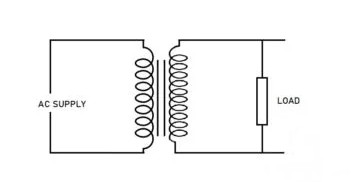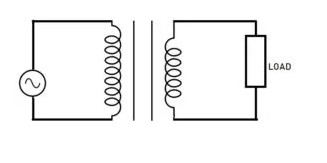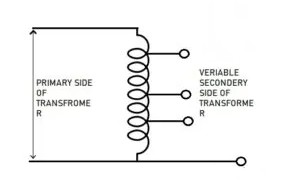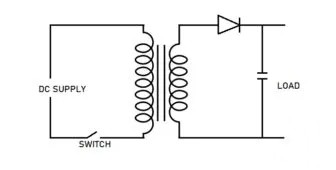Explain the Working Principle of Different Transformers in Detail
A transformer is a device containing magnetically coupled coils, usually electrically isolated from each other, that transfers power from one circuit to another. How does a transformer work? This article will walk you through how different transformers work.
The basic principle of transformer operation is electromagnetic induction (or mutual inductance), when two different electrically isolated coils are close together, when alternating current is applied to the primary coil, one magnetic field can be linked to the other coil, and the magnetic field generated by the fluctuating magnetic field is in the secondary An electromotive force is generated in the coil.
1. the working principle of the step-up transformer
A transformer that produces a higher voltage on the secondary than that applied to the primary is a step-up transformer.
Transformers use induction (basic principle) between two circuits coupled by a common (fluctuating) magnetic flux. When an alternating current (AC) is applied to the primary coil, a fluctuating magnetic field is generated, which creates an electromotive force in the secondary coil.

As (stepping up the transformer) is greater than the primary coil (n1), the EMF (electromotive force) corresponds to the number of turns. Therefore, the secondary calibration produces a higher voltage relative to the primary coil.
The ratio (K) of the voltage conversion step-up transformer is greater than 1 (K>1). K= E2/E1= N2/N1, where K is the transformation ratio, N1 is the number of turns of the primary coil, and N2 is the number of turns of the secondary coil.
2.the working principle of the step-down transformer
A step-down (a type of substation transformer) transformer produces a lower voltage on the secondary side of the transformer.
De-escalation transformer plant is concerned with the mutual inductance between two circuits that are galvanically isolated from each other but coupled by magnetic flux. When an alternating current (AC) is passed through the primary coil, a fluctuating magnetic field is generated which creates an electromotive force (emf) in the secondary coil.
Since the number of turns (n1) of the primary coil is greater than the number of turns (n2) of the secondary coil, that is, n1>n2, the induced electromotive force (emf) is proportional to the number of turns, so that the voltage generated on the secondary coil (transformer) is lower than primary voltage.

The transformation ratio (K) of the step-down transformer is less than 1 (K<1).
3. Working principle of autotransformer
A transformer whose (primary and secondary coil windings) are electrically interconnected is an autotransformer, meaning it has a single continuous winding common to both the primary and secondary sides of the transformer.
Autotransformers work on the principle of Faraday’s law of electromagnetic induction (or mutual inductance). According to Faraday’s law of electromagnetic induction, an electromotive force (EMF) is generated in the primary coil when it is connected to an AC power source. Like an autotransformer, the primary and secondary coils are in a single continuous winding.
As the voltage ratio per turn remains the same in both windings, an EMF will be generated. The resulting secondary voltage will be proportional to the number of turns connected to the secondary side of the transformer.

The direct electrical connection between the windings (primary and secondary coils) ensures that part of the energy is transferred by conduction between the primary and secondary windings of the transformer. The amount of winding shared by the primary and secondary sides of a transformer (or autotransformer) is called the common sector. One end of the winding is connected between the source and the load, while the other end of the source (AC source) and load are connected to lugs along the winding.
An autotransformer can be a step-down transformer when AC power is connected across the transformer windings. The load is connected through lugs across a relatively small portion of the winding.
4. Working principle of microwave transformer
Microwave transformers are strong, cheap, and produce high voltage arcs. Microwave transformers work just like any other transformer.
A microwave (oven) transformer has three (1 primary and 2 secondary) windings. When current is passed through the magnetron, electrons are affected to produce microwave radiation. When the magnetron (oven) transformer of the microwave oven works, AC flows through the secondary winding (or coil) of the (microwave) transformer to cause magnetic saturation of the iron core; as the anode voltage of the magnetron rises. The anode current also increases with the current through the secondary winding, strengthening the magnetic separation and increasing the leakage flux, resulting in a high secondary voltage in the transformer.
5.the working principle of the output transformer
The output transformer blocks DC and passes AC signals.
An output transformer is an electromagnetic device that operates on the principles of Faraday’s law of electromagnetic induction, isolating the input circuit from the output flow while filtering the AC signal through the magnetic coupling between the input and output circuits.
Output transformers can be used to increase or decrease the applied voltage through the input circuit to the output circuit.
6. the working principle of the flyback transformer
A flyback transformer (generating a sawtooth signal) is also considered a line output transformer. This transformer can be excited with a DC voltage. It can both transmit energy and store energy.
The basic working principle of a flyback transformer is mutual inductance. In this transformer, a diode is linked in series with the secondary (basic) transformer and a capacitor is connected in parallel with the load.

The primary coil is connected to a DC power source together with a switch. When the switch is open, (DC) current flows through the primary circuit of the transformer and energizes the primary coil. The primary coil ramp (a steady rise in voltage) is created through the primary inductance, which is stored in the form of magnetic energy between the transformer’s inductive gaps (between the coils). The diode is connected in series with the secondary coil of the transformer and is reverse biased, limiting the build-up of current in the secondary circuit.
When the switch is closed, the primary current drops to zero, and the energy stored in the gap is released and transferred to the secondary coil, causing the output voltage to rise rapidly as the voltage transitions to forward bias.
7.the working principle of step-down transformer
A step-down transformer is used to adjust voltage levels, and it can be used to make small changes in the applied voltage, up to 30%.
A step-down transformer has four windings that can be connected in different ways depending on the needs. It is based on the principle of mutual inductance between magnetically coupled coils. The (output) voltage produced by a buck-boost transformer is a function of the input voltage. If the input voltage changes, the output voltage will change by the same percentage. Depending on the connections between the coils, the transformer can step up or step down the voltage.

